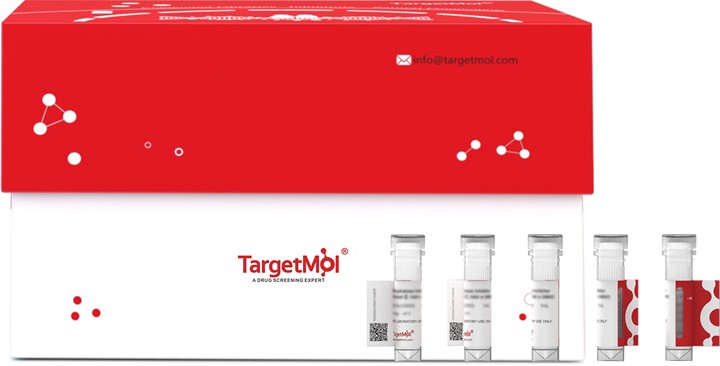Shopping Cart
Remove All Your shopping cart is currently empty
Your shopping cart is currently empty
CA9 is a member of the carbonic anhydrases' family, that is often expressed in cancer cells under hypoxic condition. CA9 expression potentially contributes to the regulation of cancer cell differentiation and mediates tumour-associated genes and signalling pathways, including apoptosis, hypoxia, G2M checkpoint, PI3K/AKR/mTOR signalling and TGF-beta signalling pathways. CA9/Carbonic Anhydrase IX Protein, Human, Recombinant (His & Avi) is expressed in HEK293 mammalian cells with C-His-Avi tag. The predicted molecular weight is 43.7 kDa and the accession number is Q16790.

| Pack Size | Price | USA Warehouse | Global Warehouse | Quantity |
|---|---|---|---|---|
| 5 μg | $61 | 7-10 days | 7-10 days | |
| 10 μg | $96 | 7-10 days | 7-10 days | |
| 20 μg | $156 | 7-10 days | 7-10 days | |
| 50 μg | $297 | 7-10 days | 7-10 days | |
| 100 μg | $511 | 7-10 days | 7-10 days | |
| 200 μg | $925 | 7-10 days | 7-10 days | |
| 500 μg | $2,030 | 7-10 days | 7-10 days |
| Biological Activity | Immobilized Human CA9, His Tag at 1μg/ml (100μl/Well) on the plate. Dose response curve for Anti-CA9 Antibody, hFc Tag with the EC50 of 8.0ng/ml determined by ELISA. |
| Description | CA9 is a member of the carbonic anhydrases' family, that is often expressed in cancer cells under hypoxic condition. CA9 expression potentially contributes to the regulation of cancer cell differentiation and mediates tumour-associated genes and signalling pathways, including apoptosis, hypoxia, G2M checkpoint, PI3K/AKR/mTOR signalling and TGF-beta signalling pathways. CA9/Carbonic Anhydrase IX Protein, Human, Recombinant (His & Avi) is expressed in HEK293 mammalian cells with C-His-Avi tag. The predicted molecular weight is 43.7 kDa and the accession number is Q16790. |
| Species | Human |
| Expression System | HEK293 Cells |
| Tag | C-His-Avi |
| Accession Number | Q16790 |
| Synonyms | RCC,PMW1,P54/58N,MN,G250,EC 4.2.1.1,Carbonic Anhydrase IX,CA-IX,CAIX,CA9 |
| Construction | Gln38-Asp414 |
| Protein Purity | > 95% as determined by Tris-Bis PAGE; > 95% as determined by HPLC |
| Molecular Weight | 43.7 kDa (predicted). Due to glycosylation, the protein migrates to 50-60 kDa based on Tris-Bis PAGE result. |
| Endotoxin | < 1 EU/μg by the LAL method. |
| Formulation | Lyophilized from a solution filtered through a 0.22 μm filter, containing 50 mM Tris, 150 mM NaCl (pH 7.4). Typically, 8% trehalose is incorporated as a protective agent before lyophilization. |
| Reconstitution | Reconstitute the lyophilized protein in distilled water. The product concentration should not be less than 100 μg/ml. Before opening, centrifuge the tube to collect powder at the bottom. After adding the reconstitution buffer, avoid vortexing or pipetting for mixing. |
| Stability & Storage | It is recommended to store recombinant proteins at -20°C to -80°C for future use. Lyophilized powders can be stably stored for over 12 months, while liquid products can be stored for 6-12 months at -80°C. For reconstituted protein solutions, the solution can be stored at -20°C to -80°C for at least 3 months. Please avoid multiple freeze-thaw cycles and store products in aliquots. |
| Shipping | In general, Lyophilized powders are shipping with blue ice. |
| Research Background | CA9 is a member of the carbonic anhydrases' family, that is often expressed in cancer cells under hypoxic condition. CA9 expression potentially contributes to the regulation of cancer cell differentiation and mediates tumour-associated genes and signalling pathways, including apoptosis, hypoxia, G2M checkpoint, PI3K/AKR/mTOR signalling and TGF-beta signalling pathways. |
| Size | Quantity | Unit Price | Amount | Operation |
|---|

Copyright © 2015-2025 TargetMol Chemicals Inc. All Rights Reserved.